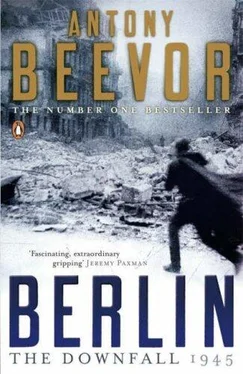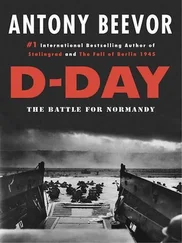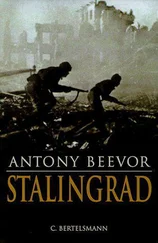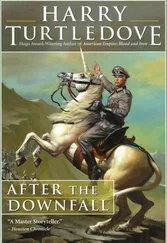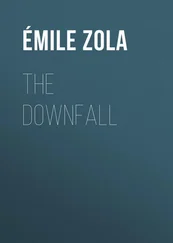Siege artillery had begun the softening-up process nine days before, but by the morning of 18 February, 1,400 guns, mortars and katyusha launchers were ready for the four-hour bombardment. Storm groups fought into the fortress, whose superstructure had been crushed by explosive fire. When resistance from a building continued, a 203mm howitzer was brought up and blasted the walls over open sights. Flamethrowers were used and explosive charges dropped down ventilation shafts. German soldiers who tried to surrender were shot by their own officers. But the end was imminent. On the night of 22–23 February, the commandant, Major General Ernst Gomell, spread out the swastika flag on the floor of his room, lay down on it and shot himself. The remnants of the garrison capitulated.
The siege of Breslau was to be even more prolonged: the city held out even after Berlin had fallen. As a result it was one of the most terrible of the war. The fanatical Gauleiter Hanke was determined that the capital of Silesia should remain unconquered. It was he who used loudspeaker vans to order women and children to flee the city in late January. Those who froze to death were entirely his responsibility.
The city had good stocks of food but little ammunition. The attempts to drop ammunition by parachute were a terrible waste of Luftwaffe resources. Colonel General Schörner, the commander-in-chief of Army Group Centre, then decided to send part of the 25th Parachute Regiment at the end of February to strengthen the garrison. The regimental commander protested strenuously that there was no landing zone, but on 22 February the battalion boarded Junkers 52 transports at Jüterbog, south of Berlin. At midnight the aircraft approached Breslau. ‘Over the city,’ one of the paratroopers wrote later, ‘we could see extensive fires and we encountered heavy anti-aircraft fire.’ A hit on the radio left them out of contact with ground control and they landed at an airfield near Dresden. Another attempt was made two nights later. The Soviet flak was even more intense as they circled the burning city for twenty minutes, trying to find a landing place. Three of the aircraft were lost: one of them crashed into a factory chimney.
Hanke’s disciplinary measures, backed by General Schörner’s policy of ‘strength through fear’, were terrible. Execution was arbitrary. Even ten-year-old children were put to work under Soviet air and artillery attack to clear an air strip within the city. Any attempt to surrender by those who sought to ‘preserve their pitiful lives’ would be met by a death sentence instantly carried out. ‘Decisive measures’ would also be taken against their families. Schörner argued that ‘almost four years of an Asiatic war’ had changed the soldier at the front completely: ‘It has hardened him and fanaticized him in the struggle against the Bolsheviks… The campaign in the east has developed the political soldier.’
Stalin’s boast at Yalta that the populations of East Prussia and Silesia had fled was not yet true. All too many were still trapped in besieged cities. German civilians in East Prussia also continued to suffer wherever they were, whether in Königsberg and the Heiligenbeil Kessel, attempting to leave the port of Pillau by ship, escaping on foot to the west or remaining at home. The February thaw meant that the ice of the Frisches Haff could be crossed only on foot and not by cart. The exit to Danzig, Pomerania and the west still remained open, but everyone realized that it was only a matter of time before the 1st Belorussian Front cut through to the Baltic.
Beria was informed by a senior SMERSH officer that the ‘significant part of the population of East Prussia’ which had fled into Königsberg had found that there was little room for them and even less food. They were lucky if they received 180 grams of bread a day. ‘Starved women with children are dragging themselves along the road’ in the hope that the Red Army might feed them. From these civilians, Red Army intelligence heard that ‘the morale of the Königsberg garrison is severely shaken. New general orders have been issued that any German male who does not report for frontline service will be shot on the spot… Soldiers put on civilian clothes and desert. On 6 and 7 February, the bodies of eighty German soldiers were piled up at the northern railway station. A placard was erected above them: “They were cowards but died just the same.”’
* * *
After the failure of Operation Sonnenwende, Danzig was increasingly threatened. The Kriegsmarine made great efforts to rescue as many wounded and civilians as possible. In the course of a single day, 21 February, 51,000 were brought out. The Nazi authorities estimated that only 150,000 remained to be evacuated, but a week later they found that Danzig now had a population of 1.2 million, of whom 530,000 were refugees. Greater efforts were made. On 8 March thirty-four trains of cattle trucks full of civilians left Pomerania for Mecklenburg, west of the Oder. Hitler wanted to move 150,000 refugees into Denmark. Two days later instructions were issued: ‘The Führer has ordered that from now on Copenhagen is to become a target sanctuary.’ Also on 10 March, the estimated running total of German refugees from the eastern provinces rose to 11 million people.
Yet even while the city of Danzig swarmed with frightened refugees desperate to escape, vile work continued in the Danzig Anatomical Medical Institute. After the Red Army captured the city a special commission was sent there to investigate the manufacture of soap and leather from ‘corpses of citizens of the USSR, Poland and other countries killed in German concentration camps’. In 1943 Professor Spanner and Assistant Professor Volman had begun to experiment. They then built special facilities for production. ‘The examination of the premises of the Anatomical Institute revealed 148 human corpses which were stored for the production of soap of which 126 were male corpses, eighteen female and four children. Eighty male corpses and two female corpses were without heads. Eighty-nine human heads were also found.’ All corpses and heads were stored in metal containers in an alcohol-carbolic solution. It appears that most of the corpses came from Stutthof concentration camp, near the city. ‘The executed people whose corpses were used for making soap were of different nationalities, but mostly Poles, Russians and Uzbeks.’ The work evidently received official approval, considering the high rank of its visitors. ‘The Anatomical Institute was visited by the Minister of Education Rust and Minister of Health Care Konti. Gauleiter of Danzig Albert Förster visited the institute in 1944, when soap was already being produced. He examined all the premises of the Anatomical Institute and I think that he knew about the production of soap from human corpses.’ The most astonishing aspects of this appalling story are that nothing was destroyed before the Red Army arrived and that Professor Spanner and his associates never faced charges after the war. The processing of corpses was not a crime.
Stutthof camp contained mainly Soviet prisoners and a number of Poles, a mixture of soldiers and Jews. Some 16,000 prisoners died in the camp from typhoid in six weeks. As the Red Army approached, prisoners were ordered to eliminate all traces. The crematorium was blown up and ten barrack blocks in which Jews had been kept were burned down. Apparently ordinary German soldiers were made to take part in the executions of Red Army prisoners of war and Soviet civilians.
Whether prompted by fear of retribution for war crimes or fear of the Bolsheviks and slave labour in Siberia, the exhausted Wehrmacht still marched and fought. ‘The Germans have not yet lost hope,’ stated a French intelligence analysis that February, ‘they don’t dare to.’ Soviet officers put it slightly differently: ‘Morale is low but discipline is strong.’
Читать дальше
